National Cultural Heritage Administration released four major "Archaeological China" projects.
Today (16th) morning, National Cultural Heritage Administration released four major "Archaeological China" projects, focusing on the early civilization of China and introducing the latest archaeological findings and research results of early national research.
Chinese civilization and the origin of early countries, especially the study of Xia culture, is an important proposition of China archaeology. There are still a lot of gaps in the study of Xia history, so it is particularly important to prove it as a faithful history through archaeological discoveries because of the lack of sufficient written records. In 2018, National Cultural Heritage Administration issued the "Guidelines for the Application and Management of Major Archaeological China Projects", systematically deployed 11 projects related to early national research in the process of civilization, and concentrated on supporting more than 200 active archaeological excavation projects, which achieved important results. Today, four projects that made significant progress in 2022 were selected for centralized release.
Project 1: Shicheng Site in Houchengzui, Hohhot, Inner Mongolia
Located in Qingshuihe County, Hohhot City, Inner Mongolia Autonomous Region, Houchengzui Shicheng Site is the largest late Neolithic Shicheng site ever discovered in central and southern Inner Mongolia. From 2019 to 2022, with the approval of National Cultural Heritage Administration, the Institute of Cultural Relics and Archaeology of Inner Mongolia Autonomous Region continued to actively excavate the Shicheng site in Houchengzui.
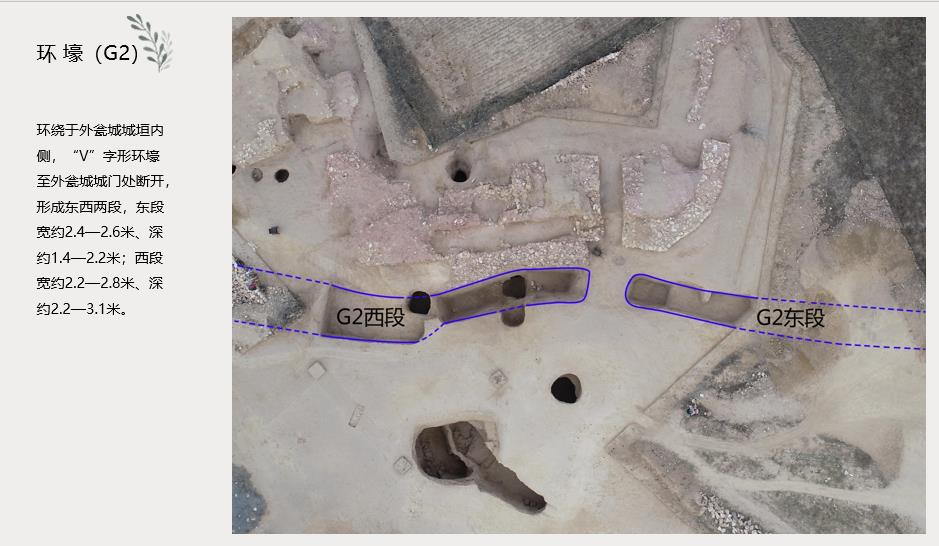
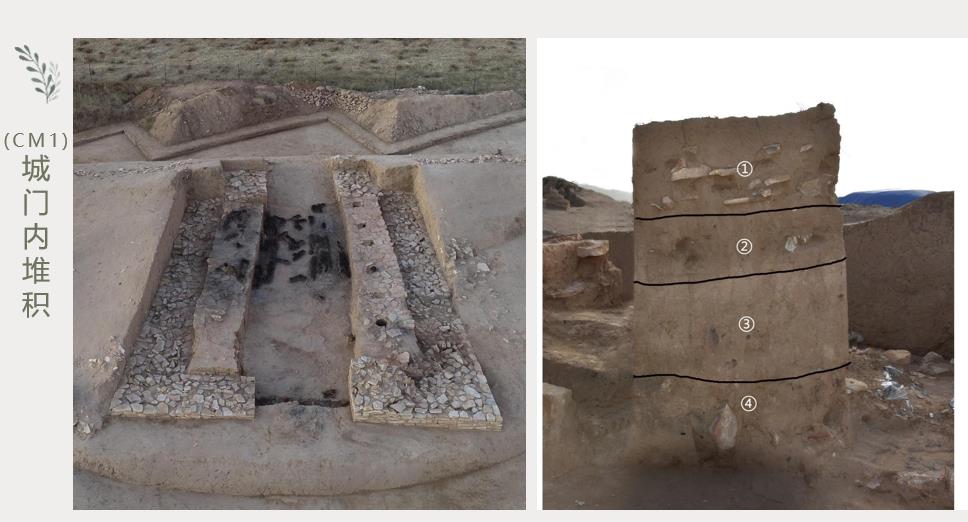
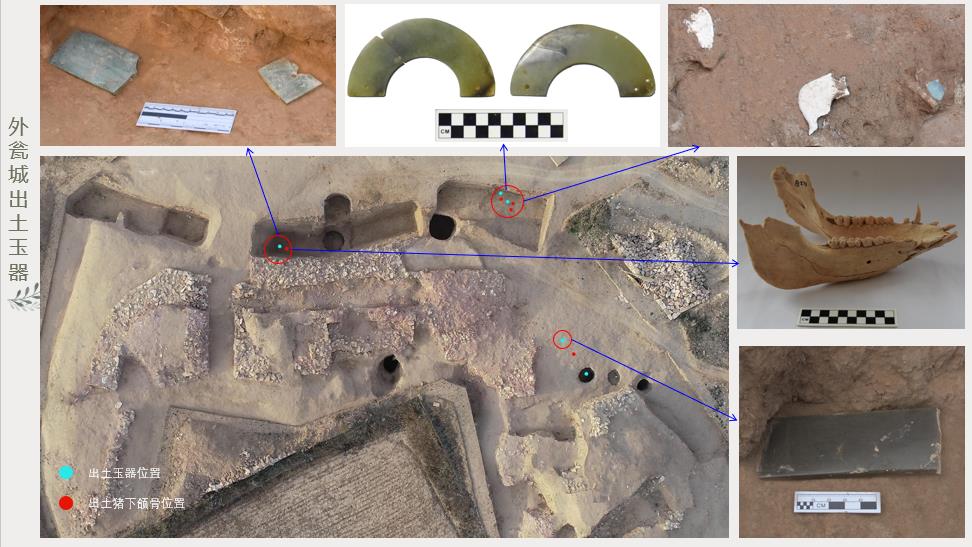
The site of Shicheng in Houchengzui covers an area of about 1.38 million square meters, and its structural layout is well preserved. It consists of inner city, outer city, urn and outer urn. Since 2021, the Institute of Cultural Relics and Archaeology of Inner Mongolia Autonomous Region has focused on archaeological excavations in the outer area of Wengcheng, and found important relics such as Outer Ring Trench and Outer Wengcheng. The outer ring trench is located in the inner side of the outer urn, and its east and west ends are connected with natural gullies. The south side of the outer urn is the entrance of the city gate, and the outer sides of the city gate are built with horse faces. The west side of the outer urn wall is connected with a square abutment, which together constitutes the first defense system of the stone city of Houchengzui. Two underground tunnels were found under the outer urn, one of which entered the inner part of the outer urn from outside the city through the outer urn wall and the bottom of the outer ring trench, and the other extended from the middle of the outer urn to connect with the inner ring trench. The specific direction and nature need to be confirmed by archaeological exploration and excavation. In addition, a large number of remains such as tombs, houses and ash pits have been discovered through archaeological exploration in the inner city area, which provides clues for understanding the structural layout of the inner city.
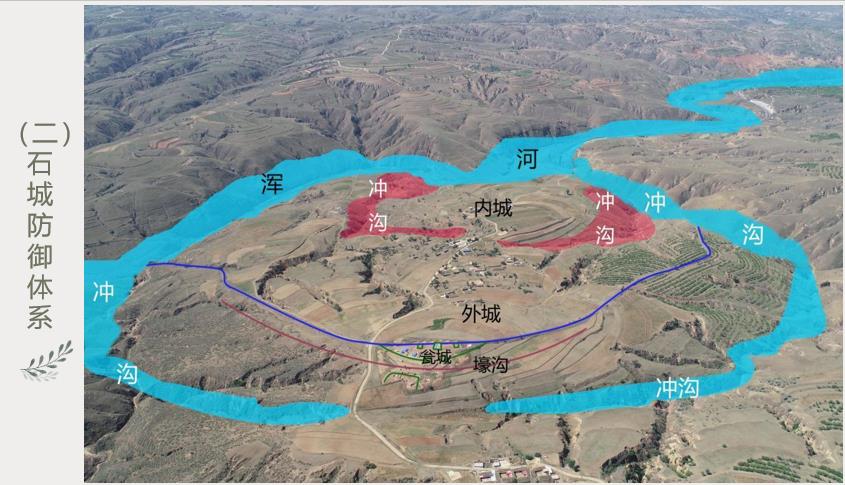
After years of systematic excavation in the area of the urn and the gate of Houchengzui Shicheng, it is basically clear that Houchengzui Shicheng has the most complex and complete triple defense system in Longshan period, that is, the first defense system consists of the outer urn wall, the horse face, the abutment and the outer ring trench, and the second defense system consists of the urn wall, the abutment, the pier and the inner ring trench arranged on the urn wall, and the main wall, the main gate and two horses on both sides of the main gate.
Project 2: Bicun Site in Xing County, Shanxi Province
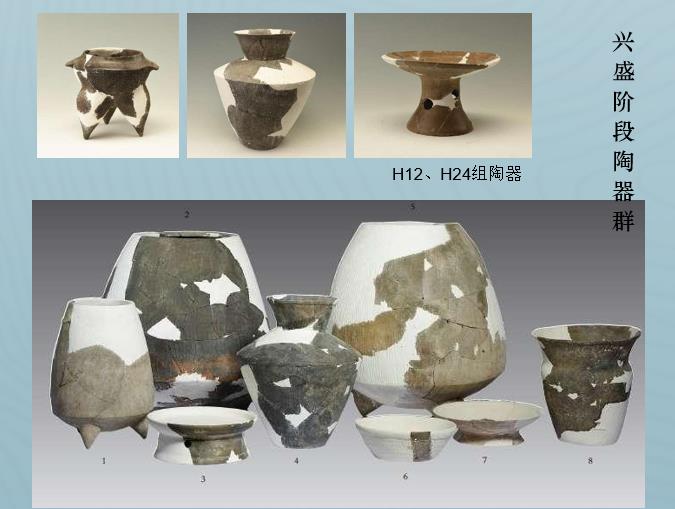
Bicun Site is located in Xing County, Luliang City, Shanxi Province, at the intersection of Weifen River and Yellow River, dating from 4000 to 3700 years ago. It is the first confirmed large-scale Shicheng settlement in Longshan period along the Yellow River in Shanxi Province. From 2020 to 2022, with the approval of National Cultural Heritage Administration, Shanxi Institute of Archaeology continued to carry out active archaeological excavations on Bicun Site.
Bicun site covers an area of about 750,000 square meters. Archaeological work over the years has preliminarily proved the structural layout of the site. From west to east, there are three sites: Xiaoyuliang, Shimen, and Chengqiang Geduo.
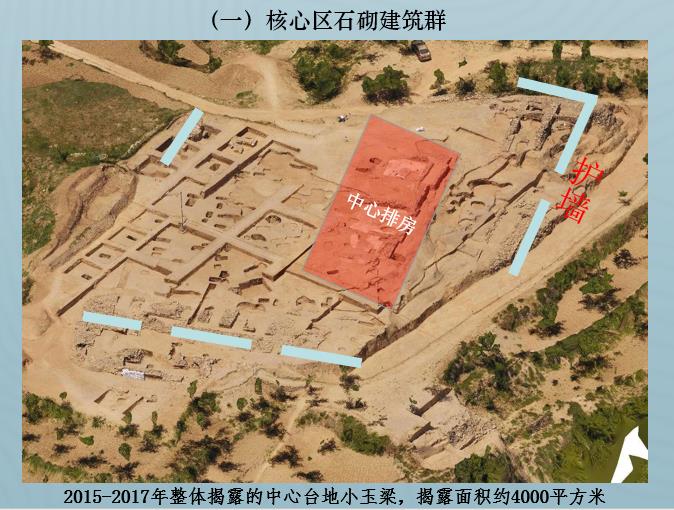
Xiaoyuliang is located in the core building area of the site, with slope protection on the edge, and a large five-story row house building in the center, with the central square in front of the row house building.
The ruins of the city defense facilities surrounded by large piers and city walls were initially found at Shimenya site, and the specific shape is still unclear. The East Wall and the Gate of the site were found at the site of the city wall. The Gate consists of three large piers arranged in the shape of "Pin" in the east, south and north. The east pier is semi-circular with a diameter of 21.5 meters, and the south and north piers are square with a side length of about 25 meters, which is huge.
The three piers are surrounded by some auxiliary facilities such as wall-clamping, passageway and small piers, and are equipped with multiple inner and outer urn structures. The entrance and exit are located on the north and south sides of Dongdun Pier, and they can enter the city only after passing through two urn cities in the west.
Bicun site is the largest city site found at the mouth of the Yellow River tributary in Hetao area, and it is the central settlement site in the late Longshan period of Weifen River basin. The East Gate of the site is well-preserved, well-structured and well-shaped, showing a unique gate shape of Shicheng Site in Hetao area.
At the same time, Bicun ruins control the prominent strategic position on both sides of the Yellow River, and the layout of the city site presents a multiple defense system with checkpoints everywhere and heavy checks, which strongly points out that it should be a gateway city on the bank of the Yellow River in Longshan era, controlling the key road between the west and the Central Plains, and is an important fulcrum to reveal the social and political relations in Longshan era in Shanxi-Shaanxi Plateau.
Project 3: New Archaeological Progress of Erlitou Site in Yanshi, Henan Province
Erlitou Site is located in Yanshi District, Luoyang City, Henan Province. It is located in the middle of Luoyang Basin and on the platform on the north bank of the Guyiluo River. The site has an existing area of 3 million square meters, and its absolute age is between 1750 BC and 1530 BC. It is generally considered as the capital site in the late Xia Dynasty by academic circles.

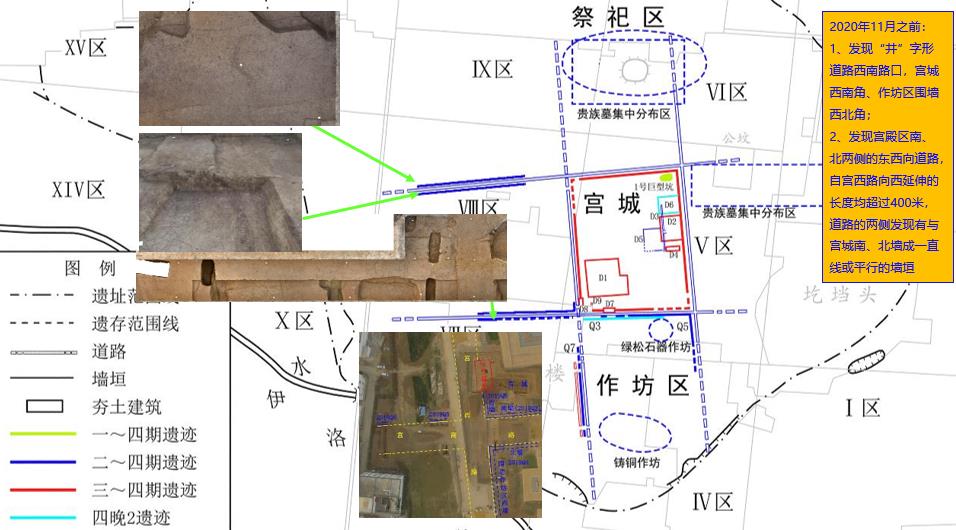
Since the "Thirteenth Five-Year Plan", under the guidance of the concept of settlement archaeology, archaeological work has gradually unveiled the multi-network layout of Erlitou site. On this basis, since 2021, many urban roads and rammed earth walls on both sides of the roads have been exposed, including doorways on the roads on the north side of Miyagi and the walls on the west side of Miyagi, and it is found that the rammed earth walls on the roads on the west side of Miyagi extend more than 200 meters to the north. Based on this, it is inferred that there is at least one partition in the west of the workshop area, the palace area and the sacrificial area.
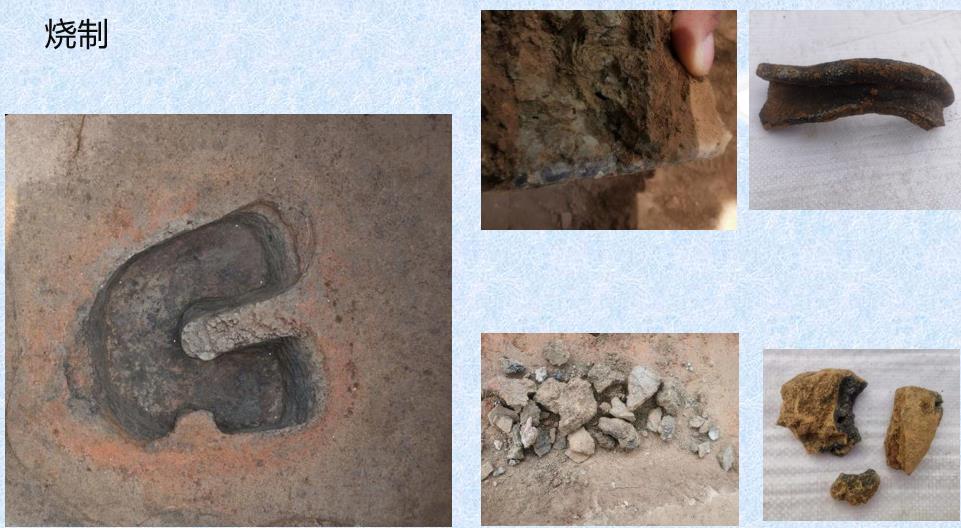
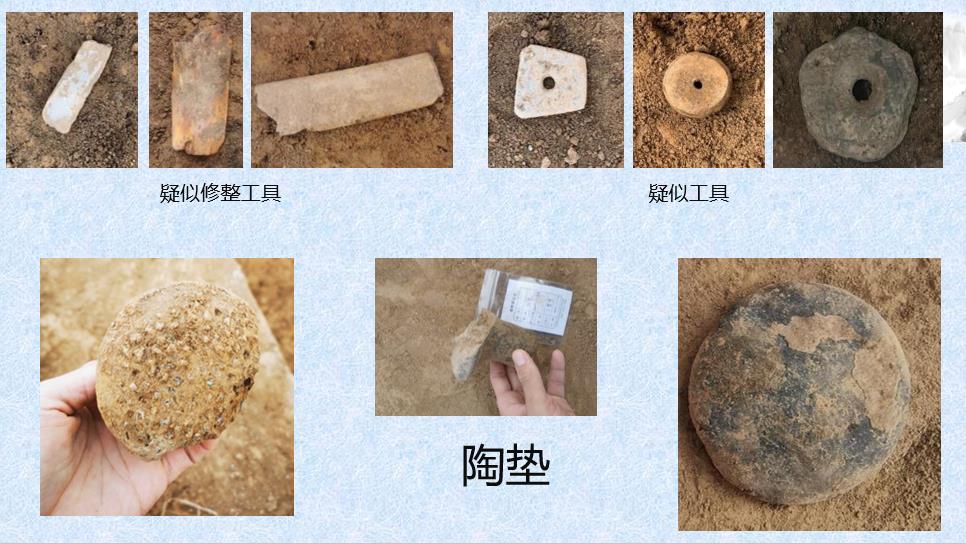
Abundant pottery remains were found in the middle of the northern margin of the site for the first time, including pottery kiln, mud pit, clay blank, burnt earth, slag, deformed pottery, a large number of broken pottery pieces, pottery mats, dressing tools, etc., which included many stages of pottery making technology. Nearly 100 square meters of bone and horn processing workshops have been found in the southwest corner of Miyagi, and a large number of bone and horn relics have been unearthed, some of which have traces of smashing, cutting and grinding, showing all aspects of bone and horn processing. Pottery-making and bone horn processing sites are important breakthroughs in handicraft archaeology of Erlitou site. To the west of the sacrificial area, a large Erlitou cultural residence was found, and high-standard tombs with bronze and jade ritual vessels were unearthed in the courtyard of the residence.
The new archaeological discovery of Erlitou site further reveals the structural layout of multi-network format, which is an important clue to explore the early national capital system, handicraft industry and social economy, etiquette and funeral system.
Project 4: Shang Dynasty Cemetery in Shangdu Shuyuan Street, Zhengzhou, Henan Province
Zhengzhou Shangdu Shuyuan Street Shang Dynasty cemetery is located in the southeast of the inner city of Zhengzhou Mall site, which is a high-grade aristocratic cemetery in Baijiazhuang period in the middle of Shang Dynasty. From June 2021 to August 2022, with the approval of National Cultural Heritage Administration, Zhengzhou Institute of Cultural Relics and Archaeology cooperated with local urban construction projects to carry out archaeological exploration and excavation.
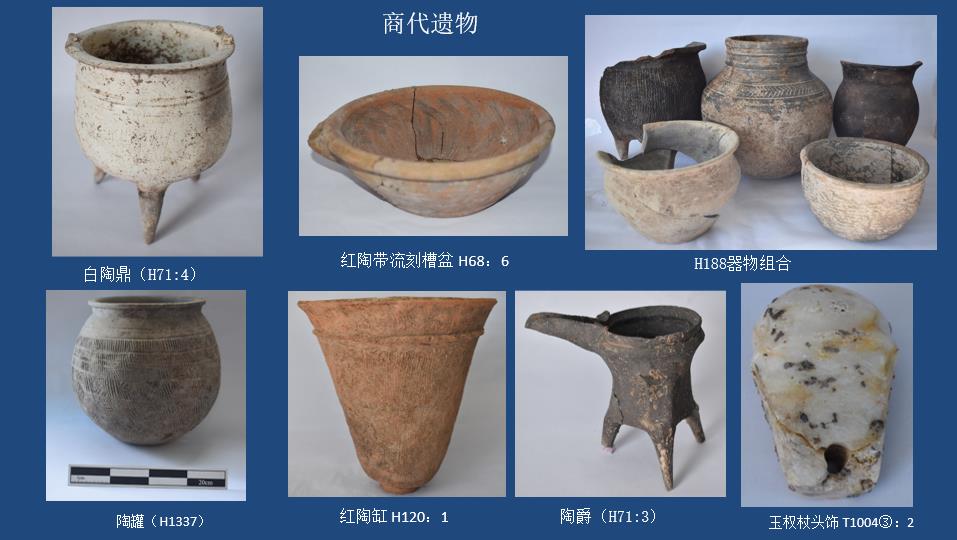
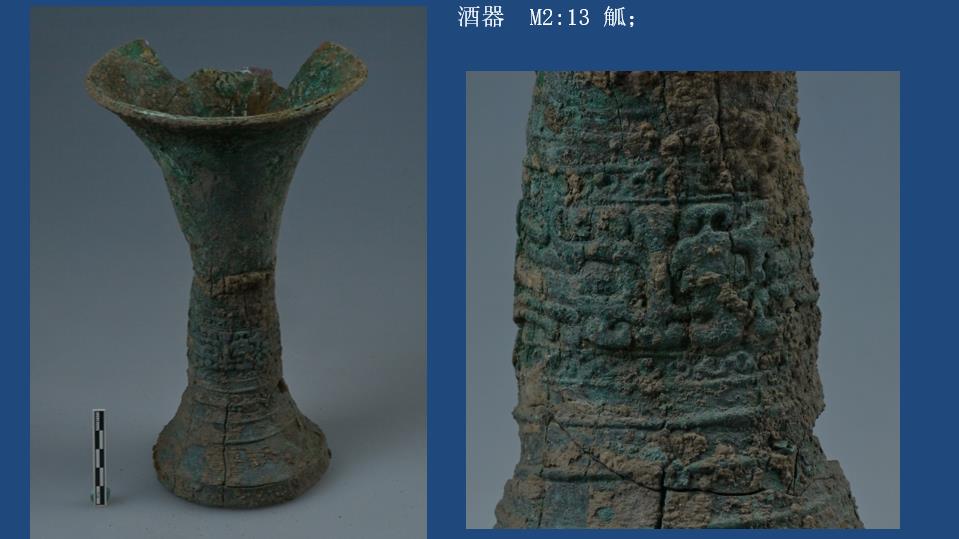
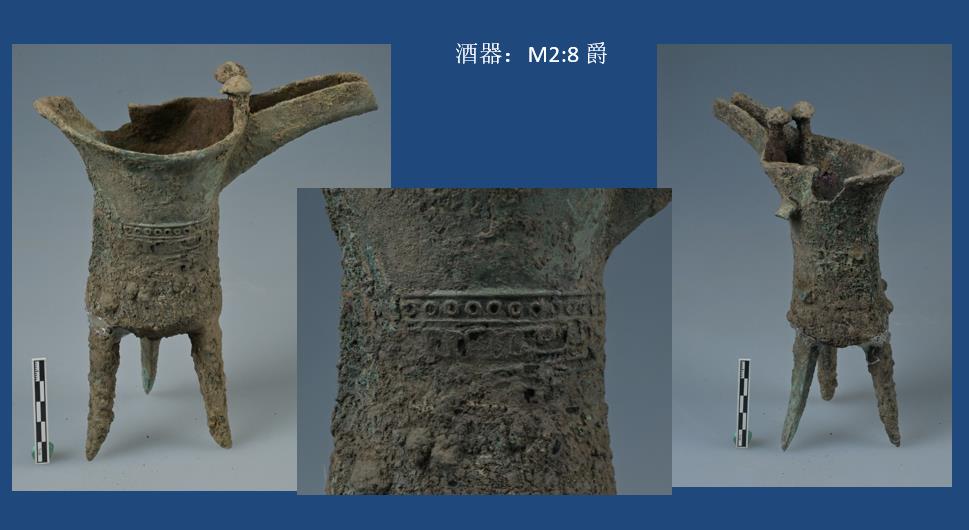
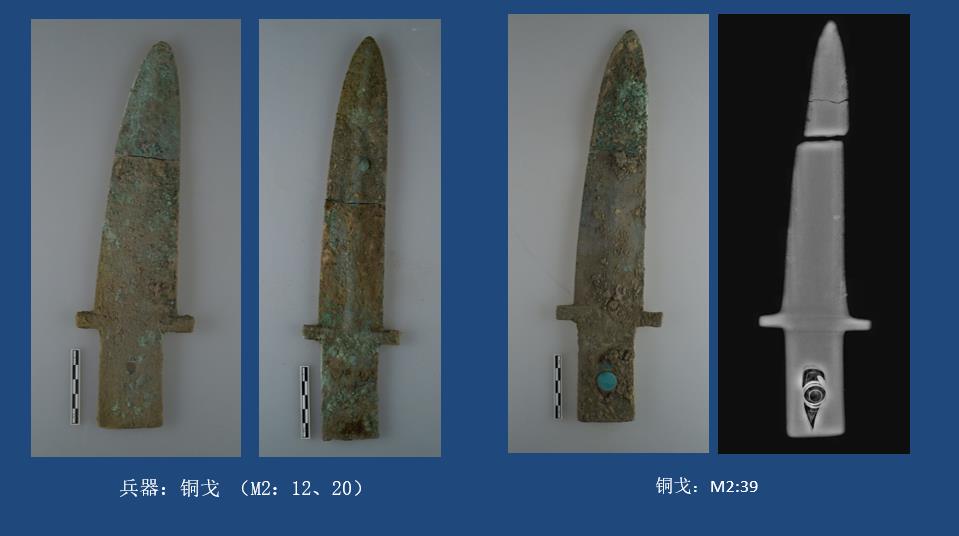
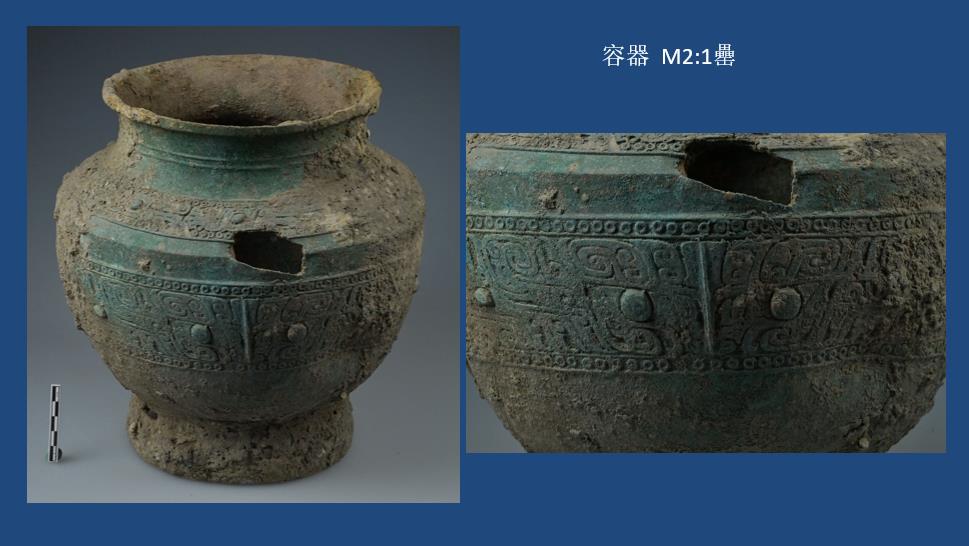
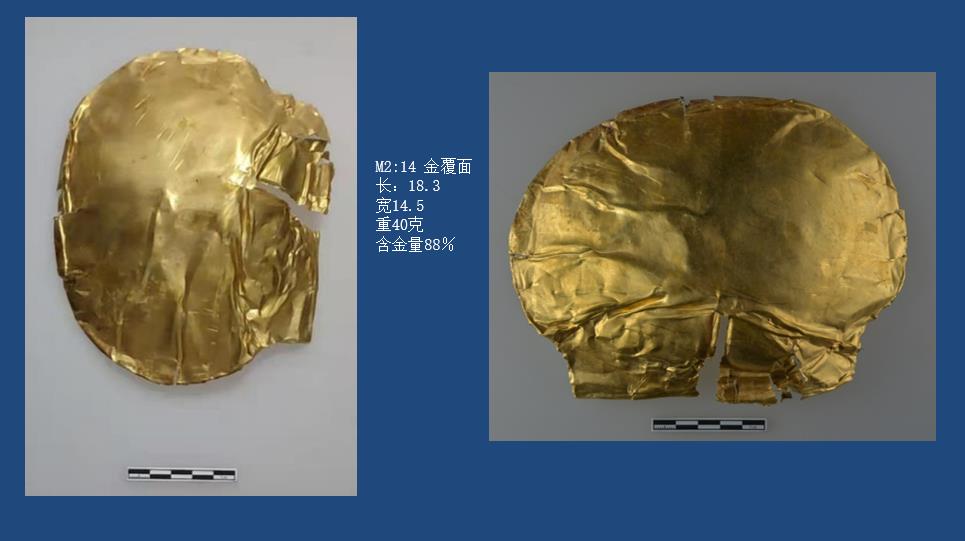
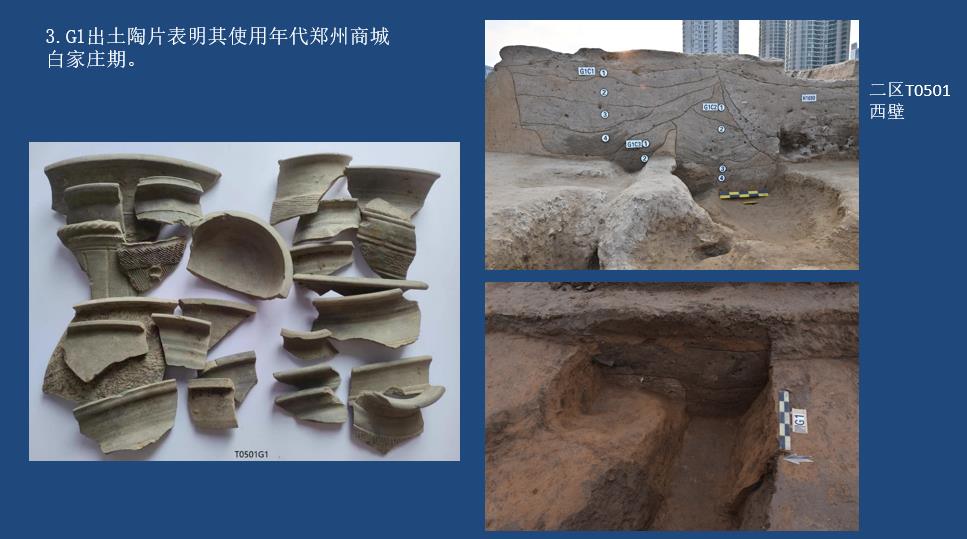
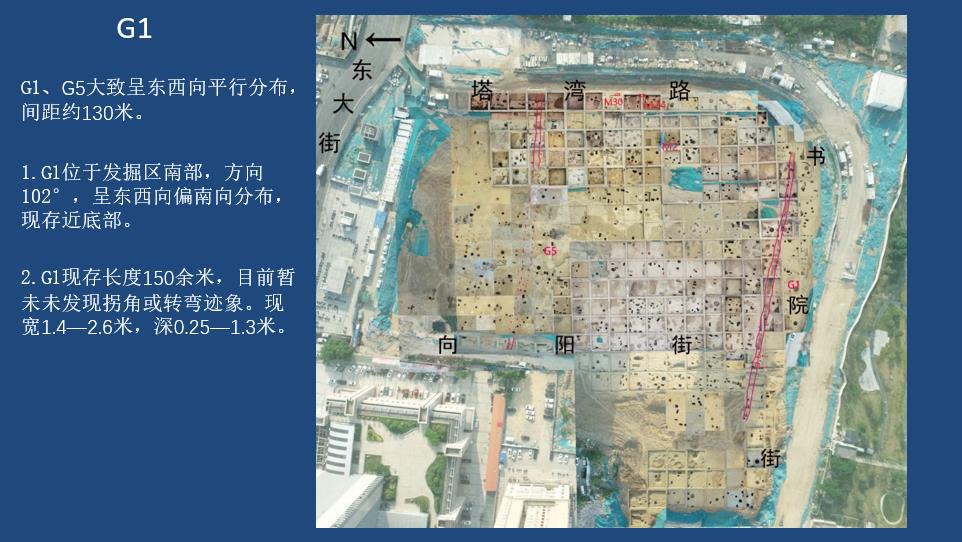
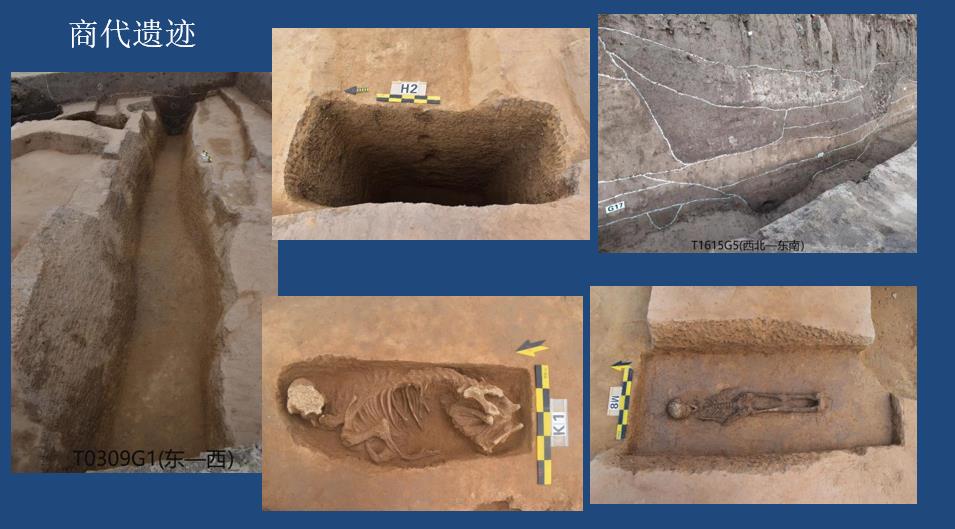
The remaining area of Shang Dynasty cemetery in Shuyuan Street, Shangdu, Zhengzhou is about 10,000 square meters. Two trenches were found on the north and south sides of the cemetery, which run east and west with a distance of about 130 meters. The tombs are mainly distributed in the area between the two trenches, and 25 tombs were found, among which 3 tombs unearthed bronze wares, 6 suspected sacrificial pits, and the remaining 16 tombs were supposed to be buried with graves, all of which had no coffin burial utensils and burial utensils. Tomb No.2 (M2) is the tomb with the highest level of archaeological discovery in Zhengzhou Mall, with a mouth of 2.93 meters long. In the middle of the tomb, reddish-brown remains suspected of cinnabar were found, and more than 200 pieces of various objects were unearthed, including 20 bronze ritual vessels and weapons, 11 jade articles, 5 gold articles, and 123 coins, turquoise tubes and beads, and ornaments inlaid with turquoise, which fully demonstrated the high-level aristocratic status of the tomb owner.
The Shang Dynasty cemetery in Shuyuan Street, Shangdu, Zhengzhou further enriched the content of the culture in the middle period of Shang Dynasty, which is an important evidence of the functional evolution and historical evolution of Zhengzhou Mall site. It is rare that many pieces of gold articles were unearthed from the tombs of high-grade nobles, which reflects the cultural exchanges and close ties between the East and the West in the Shang Dynasty. The new discovery will effectively expand the space of archaeological research in Shang Dynasty.
(CCTV reporter Tian Yunhua Yan Hong)